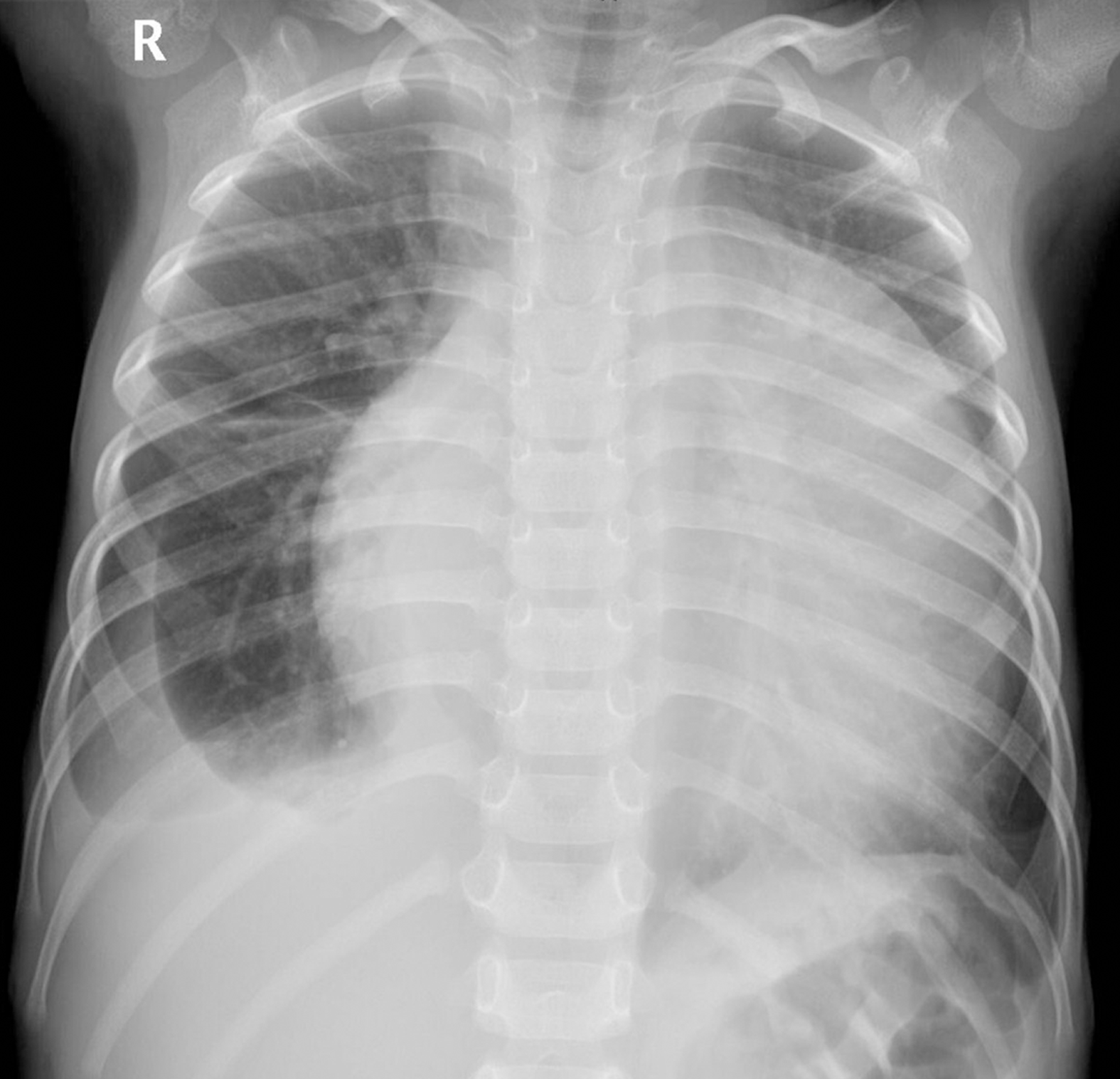Copyright
©The Author(s) 2021.
World J Clin Cases. Jun 16, 2021; 9(17): 4336-4341
Published online Jun 16, 2021. doi: 10.12998/wjcc.v9.i17.4336
Published online Jun 16, 2021. doi: 10.12998/wjcc.v9.i17.4336
Figure 1 Chest radiography of pericardial primitive neuroectodermal tumor in a 3-year-old boy.
Anteroposterior chest radiography revealed an enlarged, flask-shaped heart shadow, and a small amount of effusion in the right pleural cavity.
Figure 2 Computed tomography images of pericardial primitive neuroectodermal tumor in a 3-year-old boy.
A: Plain computed tomography scan showed pericardial effusion and an indefinite soft tissue density mass in the left pericardial cavity; B and C: The mass was heterogeneously enhanced after intravenous administration of contrast medium (B and C). A coronary artery branch was detected passing through the mass (B).
Figure 3 Magnetic resonance imaging of pericardial primitive neuroectodermal tumor in a 3-year-old boy.
A and B: The mass showed a heterogeneous signal, mainly slightly hyperintense on T1-weighted images (A) and isointense on T2-weighted images (B). The left coronary artery branch was shown to be embedded within the mass (B), suggesting a pericardial origin of the tumor; C: Contrast enhanced magnetic resonance imaging showed the mass was inhomogeneous with marked enhancement, with a clear and definite border between the mass and the left ventricle wall.
- Citation: Xu SM, Bai J, Cai JH. Primary primitive neuroectodermal tumor in the pericardium—a focus on imaging findings: A case report. World J Clin Cases 2021; 9(17): 4336-4341
- URL: https://www.wjgnet.com/2307-8960/full/v9/i17/4336.htm
- DOI: https://dx.doi.org/10.12998/wjcc.v9.i17.4336











